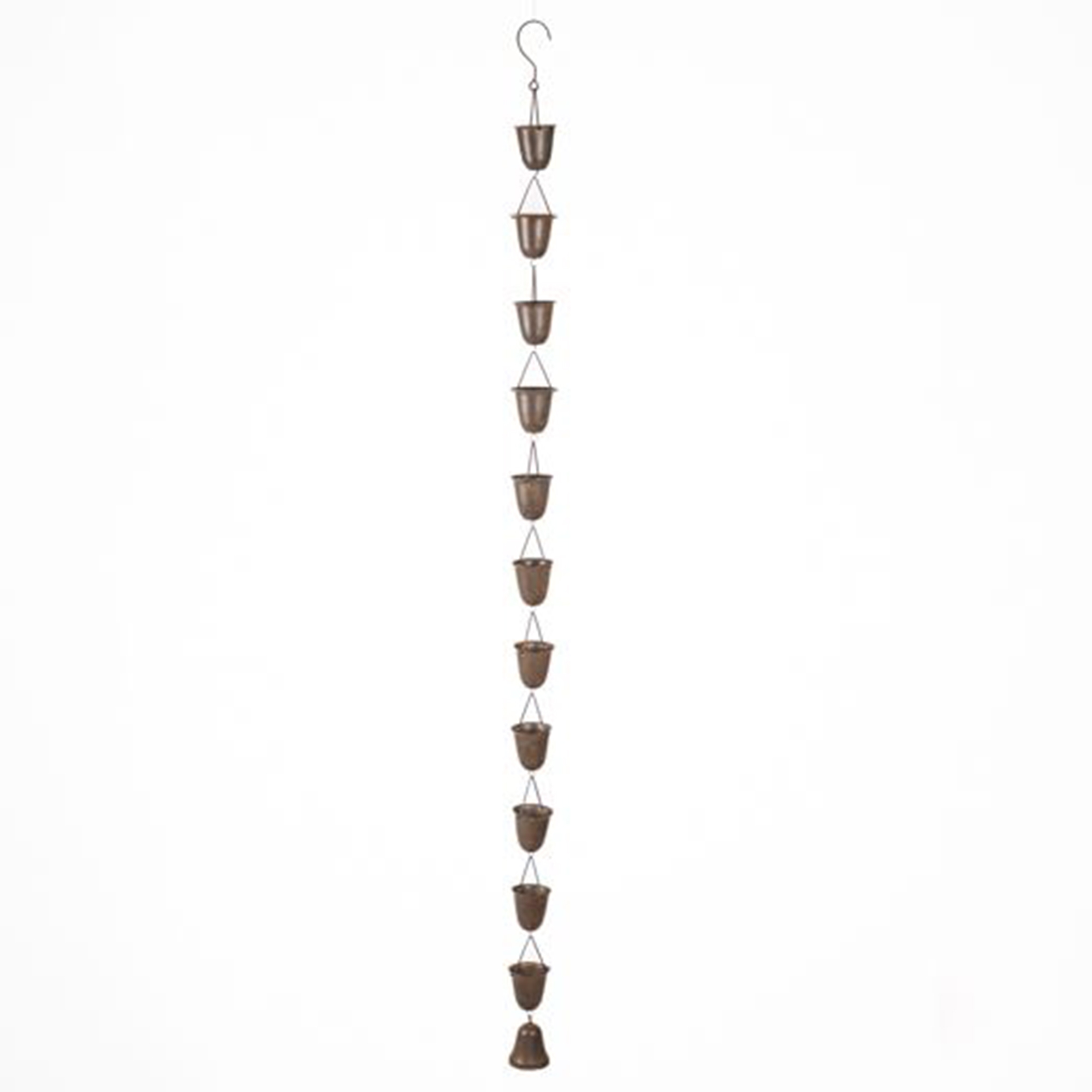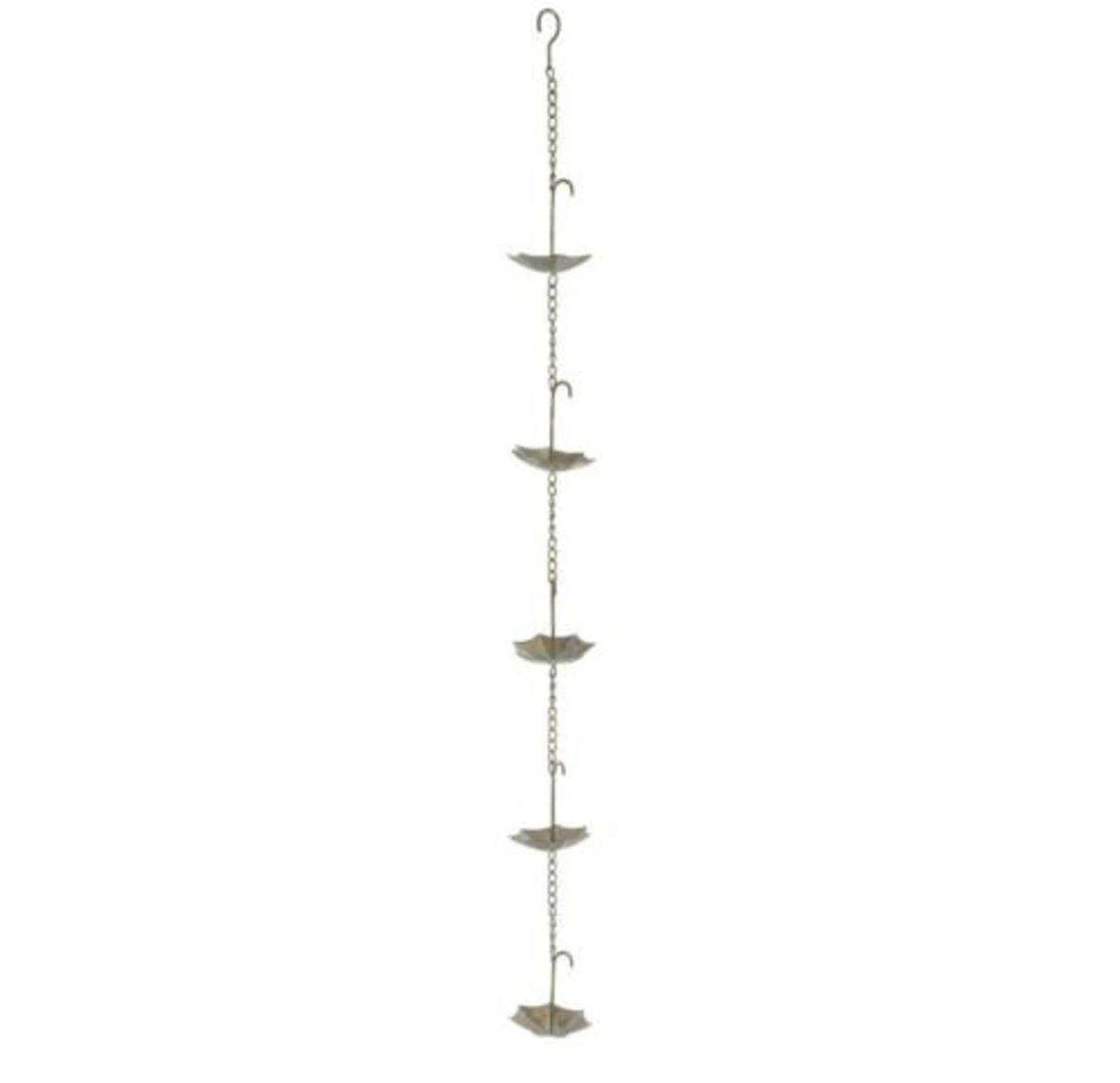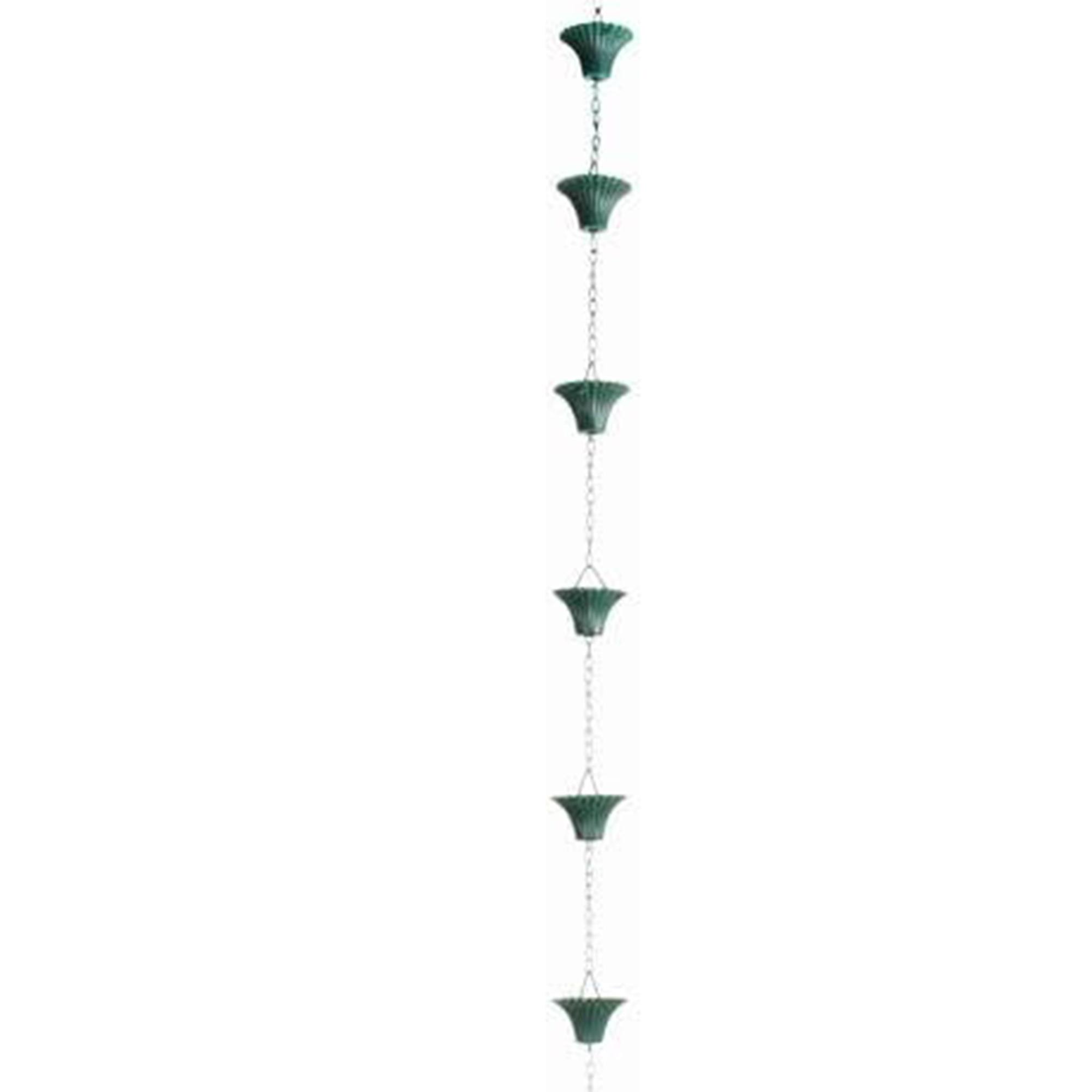Why you need a rain chain to deal with the autumnal downpour
An inexpensive but stylish way to deal with rainfall

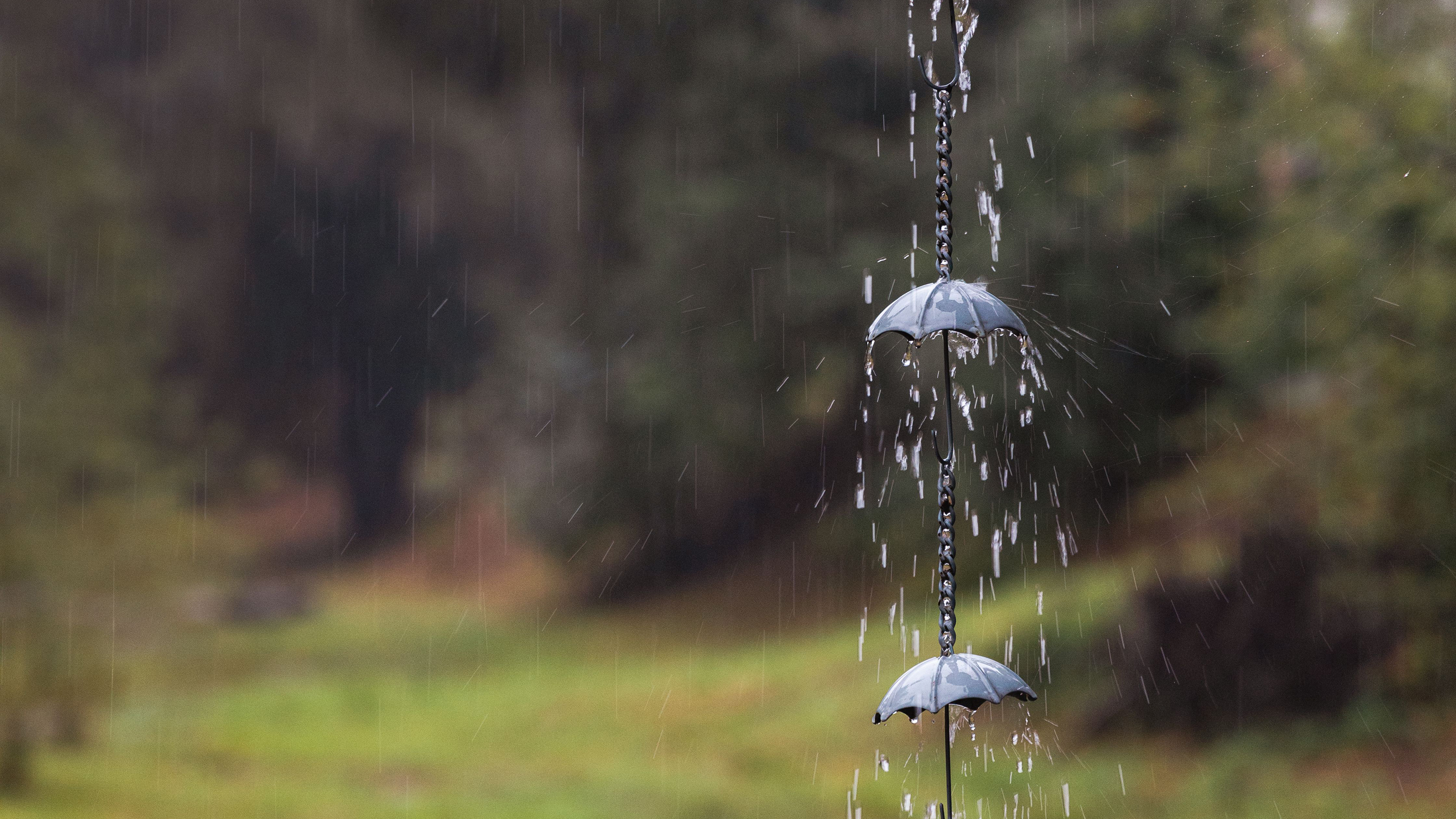
Wet weather season is officially in full swing, and as a result you've probably heard people talking about adding a rain chain to your home. But what even is a rain chain? It's a fair question, because although these have existed for centuries they've only been recently been piquing our interests.
So whether it's rain harvesting, saving soggy flowerbeds or protecting your gutters you're after, rain chains might just be the answer you've been looking for...
Rain chains – explained
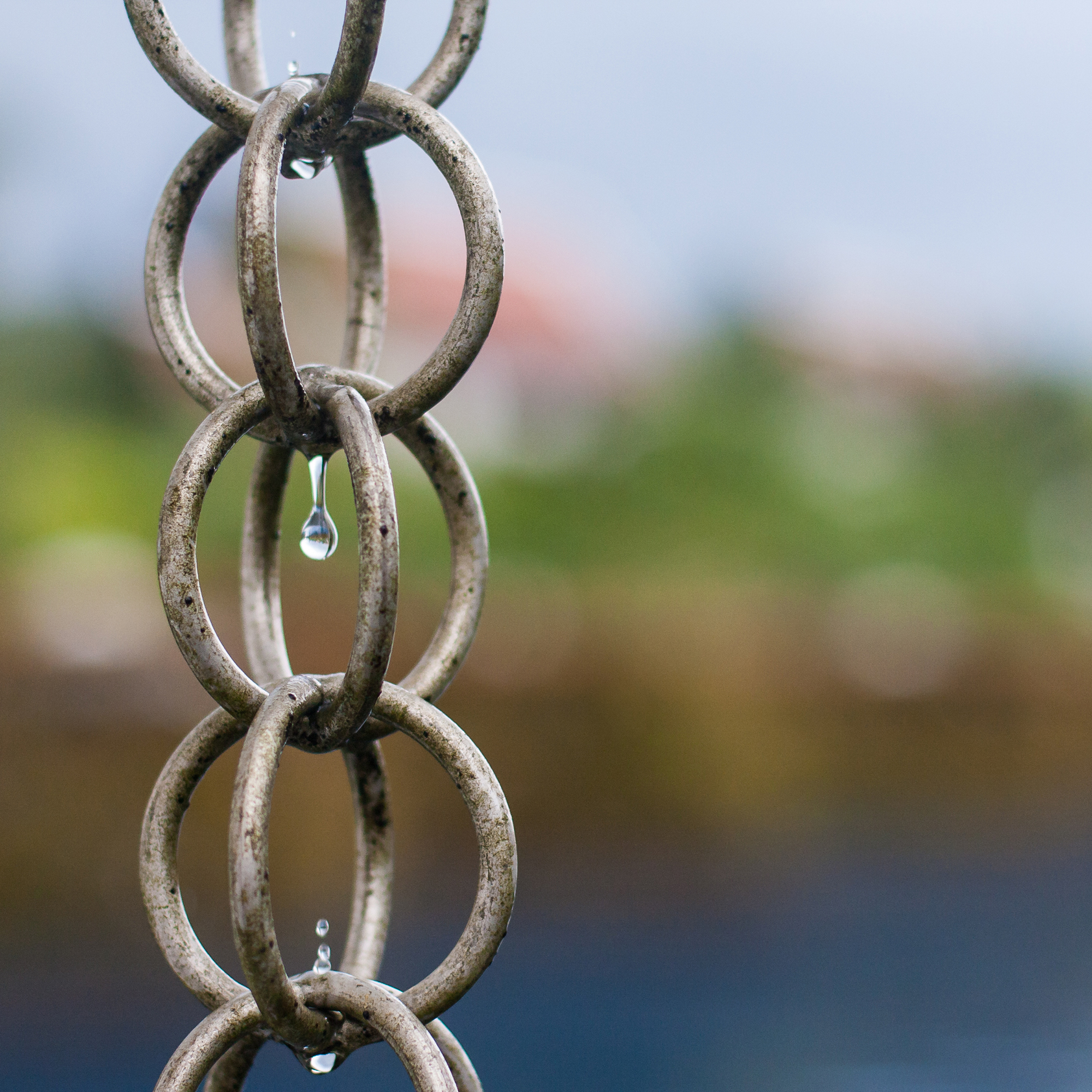
First and foremost - what even is a rain chain? Well, they're essentially Japanese alternatives to downspouts which take water off of gutters. The Japanese name 'kusari-doi' literally translates as 'chain-gutter'.
While they were originally developed with the aim of collecting rainwater for domestic use, they're now also used to add a decorative element to homes.
'Rain chains are not just a decorative delight; they have a functional aspect deeply rooted in traditional Japanese and South American architecture,' explains Sean Lade, director of Easy Garden Irrigation. 'Instead of the typical downspout, which swiftly shuttles rainwater away, a rain chain slows the descent of water, creating a pleasing visual and auditory experience.'
'Think of it as a fusion of form and function; the chain captures rainwater from the roof and guides it downward in a controlled and elegant manner.'

Sean holds in-depth expertise in gardening and horticulture, with a focus on designing efficient irrigation systems. His solutions grace gardens and nurseries across the UK, embodying an environmentally-conscious approach to water usage. Sean is always happy to share knowledge, guiding gardeners and growers through regular training on irrigation best practices.
How do rain chains work?
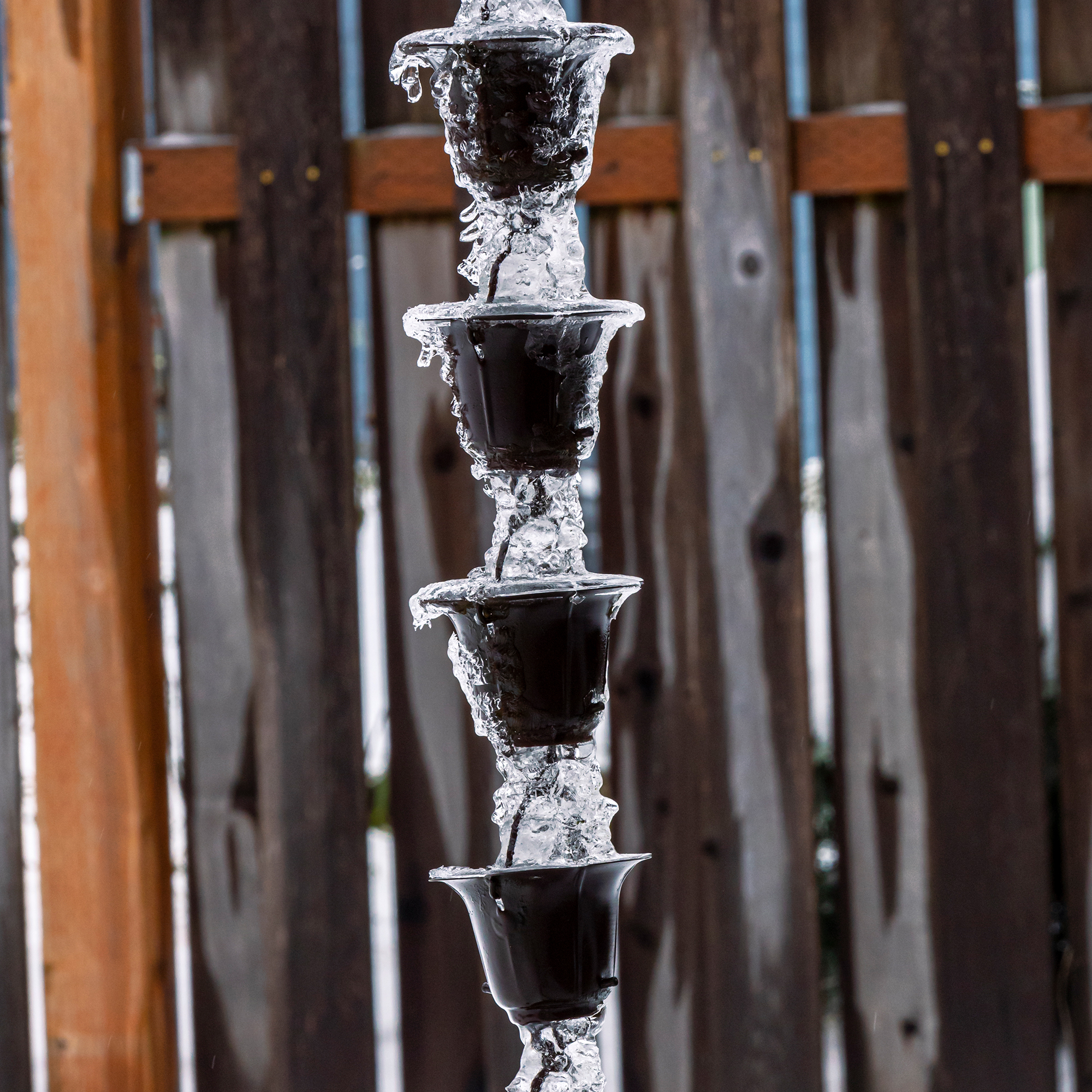
Rain chains work in a very simple, but effective, manner. They consist of either vertical chain links or a series of cups made out of metal - traditionally copper (which of course oxidises into pretty aquamarine tones), but also in more contemporary metals like steel and aluminium.
Sign up to our newsletter for style inspiration, real homes, project and garden advice and shopping know-how
Rain water goes into the gutters and instead of coming off the roof using the downspout, it cascades down the chain creating a gentle waterfall effect.
The cup design sometimes has holes in the bottom of each container to allow the rainwater to stream through, but if not then the water will pass along as each section overflows and spills into the next.
'There's a myriad of rain chain designs to suit every home's aesthetic,' notes Sean. 'Traditional Japanese Kusari-doi often features cup-like structures, creating a gentle cascade effect. But for a more contemporary look, consider chains with geometric shapes or sleek vertical links. The key is to choose a design that complements your home's architecture and personal style, while also ensuring the chain's functionality.'
What do you put at the bottom of a rain chain?

So the water comes off the gutter onto the rain chain, but what next? Well you have a couple of different options. 'Most commonly, they're positioned over a drainpipe to carry the water away,' says Sean.

Alternatively you can harvest rainwater or even create a simple - and budget friendly - water feature. 'You can have the chain feed directly into a water butt or a decorative basin,' adds Sean. The gentle tinkle of raindrops and the sight of water spiralling down can be quite the sensory treat.'
You can then use this runoff to supplement watering your garden and houseplants. If you choose this route remember that you'll want to keep an eye on this overflowing in heavy rainfall, and may have to empty it into other containers.
Why are rain chains a good option?
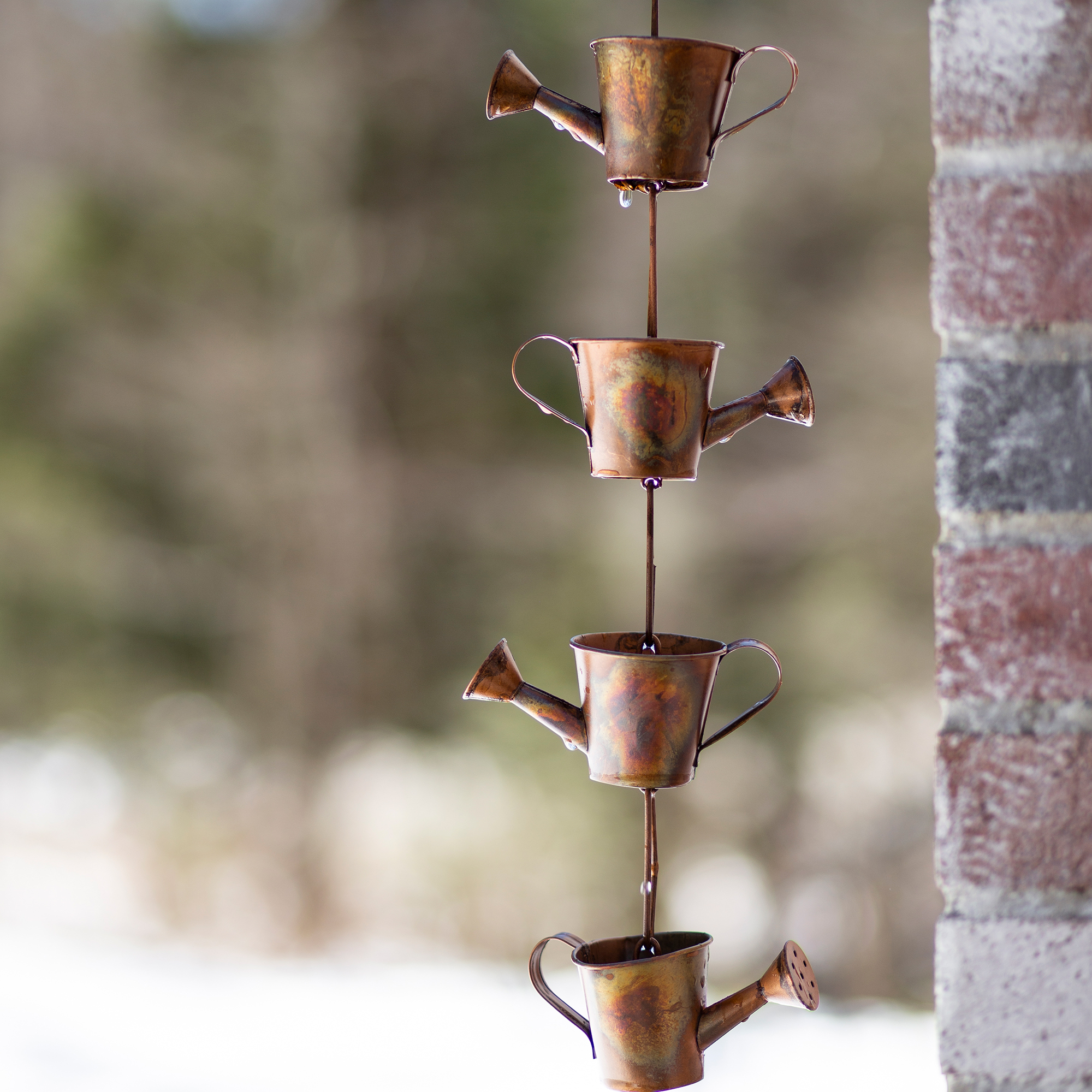
‘Obviously, a rain chain is more beautiful than a traditional downspout, however, it is also a practical option,' says Holly Reaney, Content Editor and gardening pro. 'A rain chain won’t become blocked as nearly frequently as a downspout and, if it does, is much easier to clean.’
We also love a rain chain because of how easy they are to install - you simply need to hang them beneath the section of the gutter where you'd typically place your downspout and decide on how or where you're going to direct the rainfall.
Plus, with simple DIY knowledge you can create or customise your own rain chain. They're a great budget garden idea, too, because as well as being inexpensive to purchase, maintenance is minimal as you can opt for designs where you can remove or replace individual links as needed.
What is the downside to a rain chain?
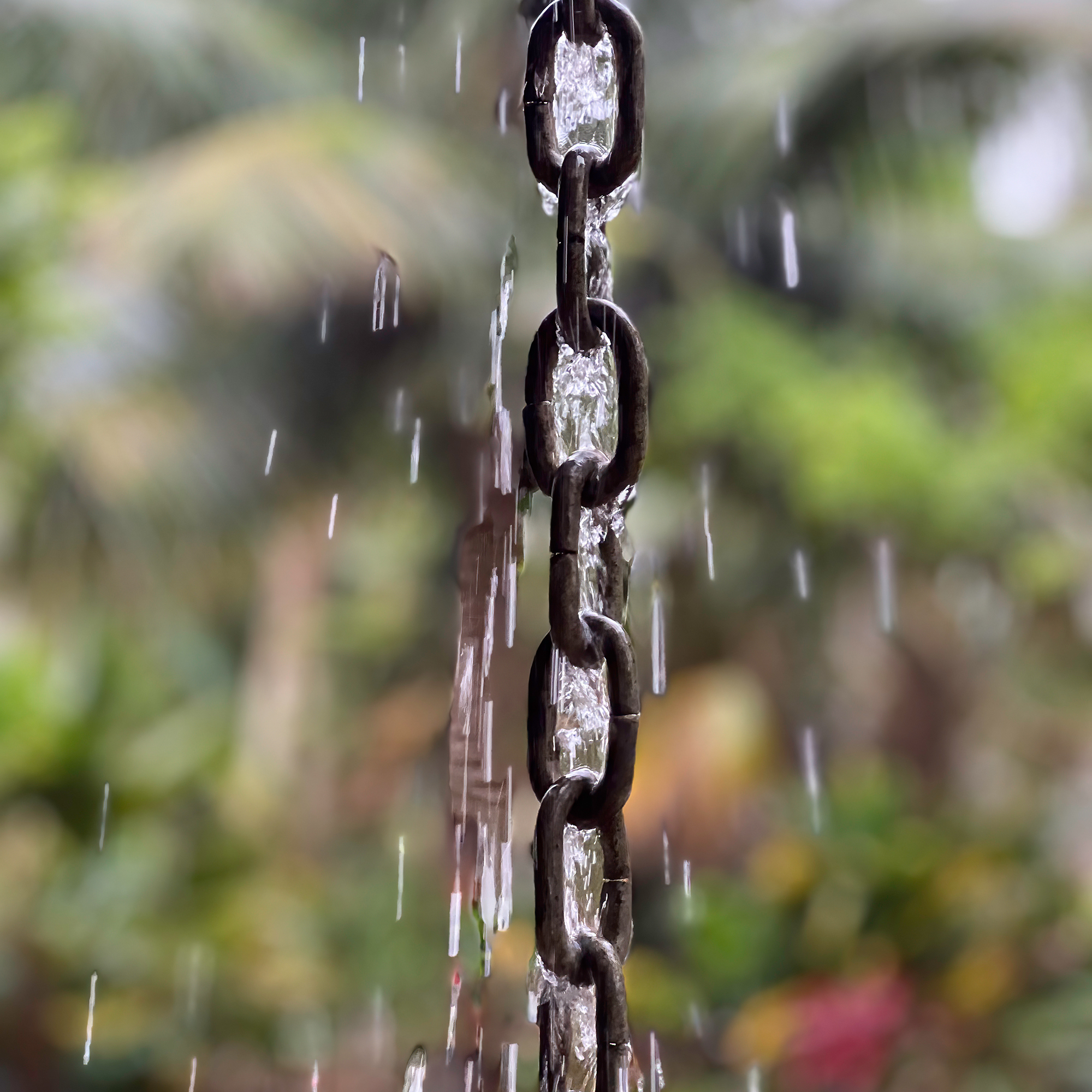
This all sounds well and good but, as with everything, there are some downsides to bear in mind. Probably the biggest disadvantage for dealing with UK weather is the water flow capacity. Some designs will struggle to cope with heavy rain and then essentially not do the job they're meant to do.
'While rain chains are a delightful blend of aesthetics and utility, they might not be as efficient as traditional downspouts in heavy rainfall areas,' agrees Sean. 'In torrential downpours, water may splash or spill over, potentially causing puddles or water accumulation around your home's foundation. It's essential to position them correctly and to ensure the base drainage or collection system is adequate.'
But if you're happy to deal with a little bit of overflow during the more tempestuous days of the year then other than that you'll find rain chains to be a decorative and useful addition to your home.
One final note – if the weather forecast warns of heavy winds, it might be worth securing of removing your rain chain to avoid any breakages or other accidents. The rest of the time, enjoy having yours up to revel in both its aesthetics and practicalities.

Thea Babington-Stitt is the Assistant Editor for Ideal Home. Thea has been working across some of the UK’s leading interiors titles for nearly 10 years.
She started working on these magazines and websites after graduating from City University London with a Masters in Magazine Journalism. Before moving to Ideal Home, Thea was News and Features Editor at Homes & Gardens, LivingEtc and Country Homes & Interiors.
